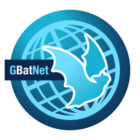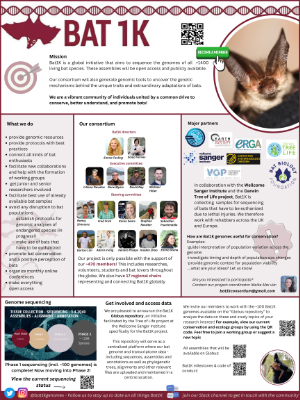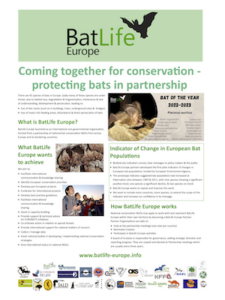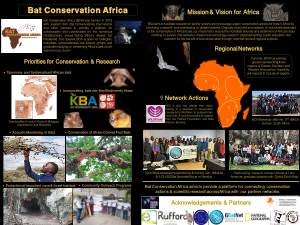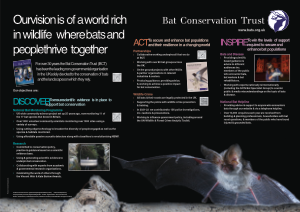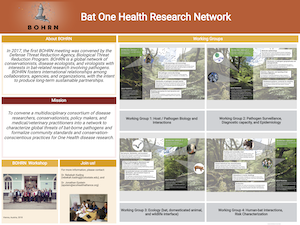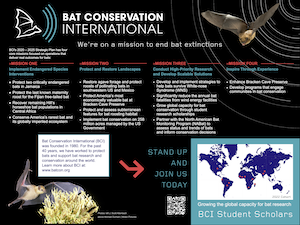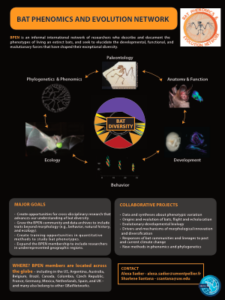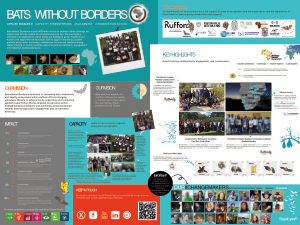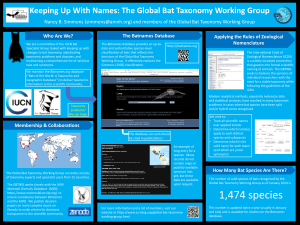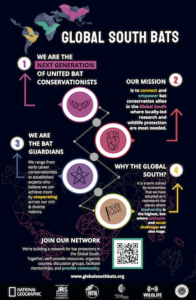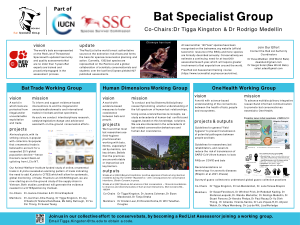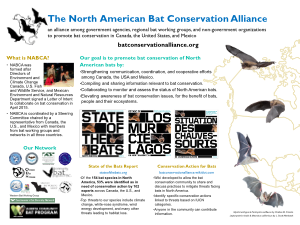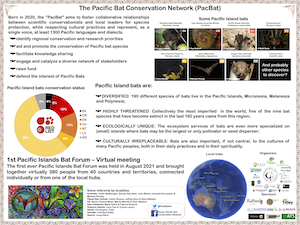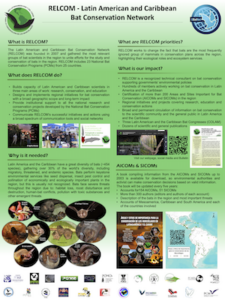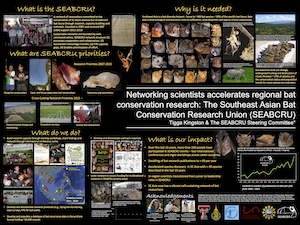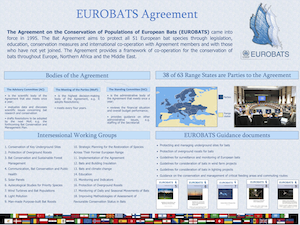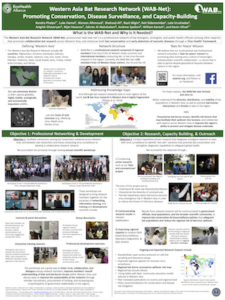GBatNet consists of 18 member networks and affiliate organizations from all over the world and multiple disciplines that share a commitment to understanding and conserving sustainable bat populations in a changing world. Learn more about each of our member networks below!
IUCN BSG | NABCA | PacBat | RELCOM | SEABCRU | UNEP/EUROBATS | WABNet
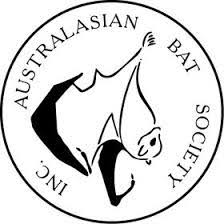 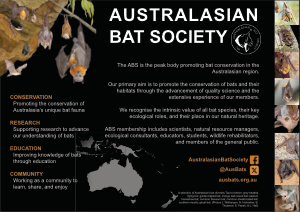 |
Australasian Bat Society (ABS) [Network Poster] Lead representatives to GBatNet: Justin Welbergen The Australasian Bat Society (ABS) began as an informal network of researchers in the mid 1960s, and was formalized in 1992, making it the oldest network in GBatNet. The ABS mission is to promote the conservation of bats and their habitats through the advancement of quality science and the extensive experience of its ~500 members. Notably, ABS has been very successful in science-based advocacy and works directly with the Australian government, assisting it at all levels with information and policy documents. Moreover, as the society matured, ABS successfully managed to expand membership beyond the original researcher base, and now includes ecological consultants, educators, natural resource managers, wildlife carers and members of the general public. The ABS's experience of diversifying its membership is valuable for the long-term GBatNet mission. More immediately, Australia is one of the few, if not only, developed country contending with emerging infectious diseases from bats (Hendra virus), mass-mortality of flying foxes from extreme heat events (losses >30% of Australian population and rising), and catastrophic loss of habitat and direct mortality as a result of wild fire. Thus, the ABS has much to offer GBatNet researchers working in Africa, South Asia and Southeast Asia and is itself in need of global support. The current catastrophes provide a grisly natural laboratory for studying species recovery and sustainability (if such is possible). |

|
Bat1K Consortium (Bat1K) [Network Poster] Lead representatives to GBatNet: Liliana Davalos, Emma Teeling, Sonja Vernes Although genomes have been published for 18 bat species, this represents only ~1% of known diversity. Bat1K is an initiative to sequence the genomes to error-free chromosome level assemblies, of all living bat species, (~n=1400 species). The Bat1K Genome Consortium unites bat biologists, computational scientists, conservation organizations, genome technologists and any interested individuals committed to a better understanding of the genetic and evolutionary mechanisms that underlie the unique adaptations of bats. The aim is to catalogue the unique genetic diversity present in all living bats to better understand the molecular basis of their unique adaptations, uncover their evolutionary history, link genotype with phenotype, and ultimately better understand, promote, and conserve bats.The Bat1K consortium will help address key questions in uncovering the rules that govern diversification and extinction across multiple scales in at least three ways: (1) establish and disseminate biochemical and bioinformatic methods to address project needs of other networks in GBatNet, (2) prioritize a series of projects explicitly scaling from molecular and cellular levels to ecological functions and ecosystems (e.g., role of transposable elements in dietary adaptations and species diversity or relating neurobiology of vocal learning and communication to genomes and transcriptomes in key bat species), (3) studying genomic legacies to understand the genetic consequences of past global change across bats in all ecosystems to build predictive models of the likely impacts of future trends, with important implications for both advancing ecological forecasting research and long-term conservation viability.Bat1K stands to both complement and benefit from every other network in the network. Despite the seeming specialization of its focus on genomics, relating phenotypic traits and functional and ecological adaptations to genetics is a central goal of Bat1K and aligns with the mission of GBatNet. For conservation, the sensitivity of bats to disturbance, and thus their long-term viability, is likely to be determined by an interplay between bat phenotypes and geography, ecology, and genetics. Understanding how these complex factors influence survival and function requires integrative approaches involving collaborations among researchers from disparate fields. For example, genome-wide screens can shed light on the adaptive potential of taxa, which, when combined with comparative phenotypic and spatial data, can inform and model future responses to range shifts and climate change. Additionally, reference genomes will facilitate the generation of population-level genetic datasets for spatial and temporal models of population structure responses to anthropogenic activity, and can be used to model the circulation of pathogens to estimate risk of zoonotic disease transmission. We anticipate that sharing genomic datasets among researchers, together with the exchange of knowledge and expertise will be critical to GBatNet goals of bridging gaps among existing discipline-based and regional networks. |
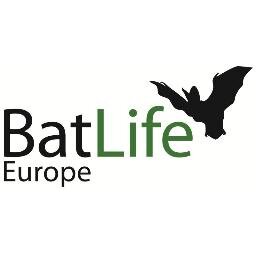
|
BatLife Europe [Network Poster] Lead representatives to GBatNet: Kit Stoner BatLife Europe is a network of 33 national Non-Governmental Organizations (NGOs) committed to promoting the conservation of all bat species and their habitats. It was formed at the suggestion of the IUCN Bat Specialist Group and works to enhance and implement activities and recommendations arising from EUROBATS working groups and resolutions. One of the major activities has been developing indicators of change in European Bat Populations, comparable to those produced for other European taxa (birds, butterflies). This experience of monitoring change can integrate with GBatNet long-term research goals to evaluate the power of predictive frameworks. |
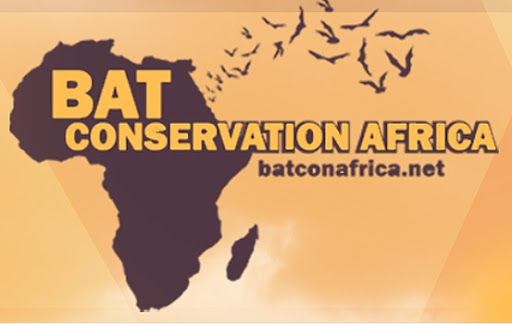
|
Bat Conservation Africa (BCA) [Network Poster] Lead representatives to GBatNet: Paul Webala, Tigga Kingston, Iroro Tanshi BCA was founded in 2013 to create a platform for information sharing, capacity building (skills transfer, education and training, leadership, resources), to identify and promote regional conservation priorities, and to identify and respond to knowledge gaps on African bats. Because of the scale of the continent the network is organized around six regions (southern, eastern, central, western, northern Africa, and western Indian Ocean Islands), but expertise and resources are limited. With the exception of South Africa, research has been very limited, and BCA seeks active collaboration through GBatNet. Given the importance of the region for bat diversity and emerging infectious diseases (e.g. Ebola, Marburg), it is a priority for international engagement. |
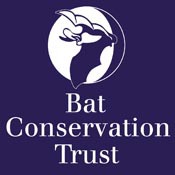
|
Bat Conservation Trust (BCT) [Network Poster] Lead representatives to GBatNet: Lisa Worledge The Bat Conservation Trust supports local bat groups across the UK and over 6000 members. We work with volunteers, scientists, industry and government both locally and nationally on a range of projects. To achieve our vision of a world rich in wildlife where bats and people thrive together, our work focuses on discovering more about bats and how they use the landscape, taking action to protect bats and enhance the landscapes on which they rely, inspiring people about bats and their environment, engaging them in their conservation and strengthen our work by building skills, resources, motivation and understanding. |
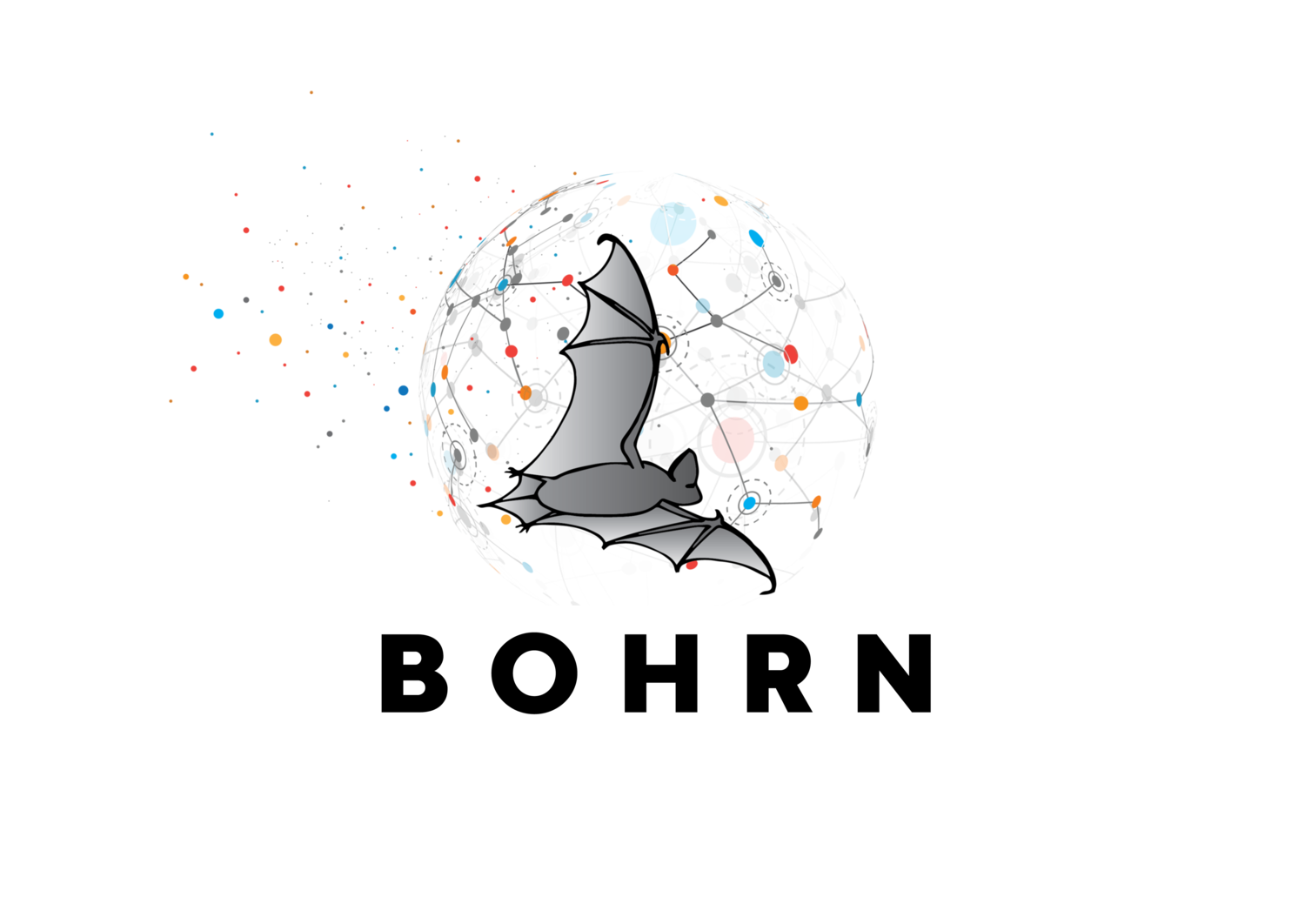
|
Bat One Health Research Network (BOHRN) [Network Poster] Lead representatives to GBatNet: Tigga Kingston, Kevin Olival, Rebekah Kading BOHRN is an initiative of the Defense Threat Reduction Agency (DRTA), Biological Threat Reduction Program (BTRP). The BOHRN vision is to convene a multidisciplinary consortium of disease researchers, conservationists, policy makers, and medical/veterinary practitioners into a network to characterize global threats of bat-borne pathogens and formalize community standards and conservation-conscientious practices for One Health disease research. It comprises four working groups that can greatly benefit from the expertise held across networks in GBatNet: (1) host/pathogen biology and interactions, (2) pathogen surveillance, diagnostic capacity and epidemiology, (3) role of ecology, behavior, and anthropogenic disturbance in viral dynamics and risk, (4) human-bat interactions and characterization of high-risk interfaces. Groups 3 and 4 are most closely tied to the goals of GBatNet. BOHRN activities dovetail with the overall conservation mission of GBatNet and will benefit from collaborative involvement of regional conservation networks where bat-borne virus diversity, and zoonotic transmission risk is greatest due to rapid land-use change of forested tropical regions. Dr. Kingston leads Working Group 3 that focuses on the role of ecological and disturbance context on pathogen dynamics and spillover. Drs. Mendenhall and Olival lead Working Group 4 that focuses on characterizing the risk associated with human-bat interactions such as hunting bats for consumption, harvesting bat guano, and interactions in human dwellings.BOHRN links GBatNet to a global network of virologists and disease ecologists, initiatives to collate and standardize materials and practices in pathogen research and working group-specific initiatives. In turn, GBatNet provides expertise to model social, ecological and evolutionary contexts driving the emergence of bat-borne viruses as zoonoses. |
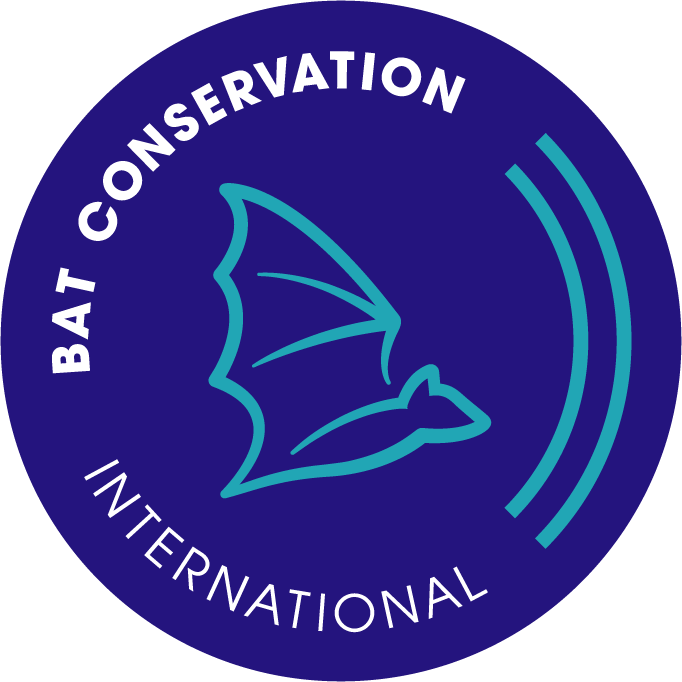
|
Bat Conservation International (BCI) [Network Poster] Lead representatives to GBatNet: Winifred Frick, Nancy Simmons BCI's mission is to conserve the world's bats and their ecosystems to ensure a healthy planet. BCI works worldwide to conserve caves, restore critical habitats in danger, and ensure the survival of bats. Founded in 1982, BCI has grown into a globally recognized conservation organization dedicated to ending bat extinctions. As a science-based and results-focused organization, BCI's strategic plan outlines high impact conservation efforts focused on four core missions to execute our work including: (1) Implement endangered species interventions, (2) Protect and restore landscapes, (3) Conduct high-priority research and develop scalable solutions, and (4) Inspire through experience. |
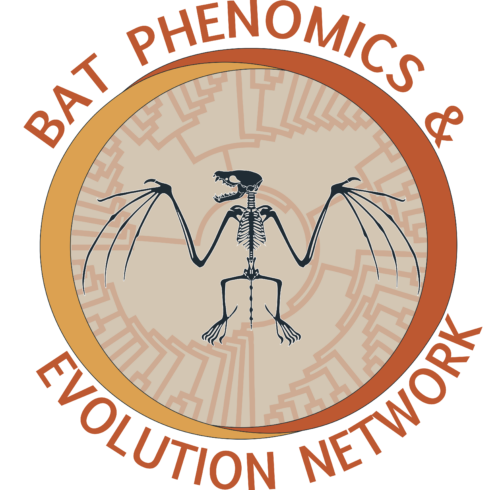
|
Bat Phenotypes and Evolution Network (BPEN) [Network Poster] Lead representatives to GBatNet: Nancy Simmons, Suzanne Hand, Sharlene Santana, Elizabeth Dumont BPEN is an informal international network of researchers who describe and document the phenotypes of bats (living and extinct) and seek to elucidate the developmental, functional, and evolutionary forces that have shaped their exceptional diversity. Central to this network is the collaborative Chiropteran Phenotypes Project hosted on MorphoBank which provides a platform for researchers to store, share, and develop matrices of phenotypic data on bats and MorphoSource, a complementary digital repository of ~ 560 μCT (Shi et al., 2018b). The Chiropteran Phenotypes Project currently has members from 11 countries (US, Argentina, Australia, Belgium, Brazil, Czech Republic, Colombia, Germany, Mexico, Netherlands, and United Kingdom) actively collaborating on phylogenetic and other studies of phenotypic variation in bats. There are currently 44 projects including bats in MorphoBank, ranging from studies of fossils and the origin of bats to descriptions of new species and new methods in phenomics, and a majority of the relevant data in these projects is archived and continually enhanced in the Chiropteran Phenotypes Project (P220). The online archive contains an ever-growing dataset of ~700 phenotypic characters variously scored in ~375 bat taxa including over 60 extinct species.We anticipate that collaborations and training facilitated by GBatNet will greatly enhance the membership scope of BPEN to include researchers in underrepresented areas (e.g., Africa, SE Asia) as well as growing the community phenotype data archives to include studies of other phenotypes, such as behavior. These activities will be critical to filling knowledge gaps needed to address the core hypotheses of GBatNet (e.g., differences between Neotropical and Paleotropical adaptive radiations and extinctions of bats). |
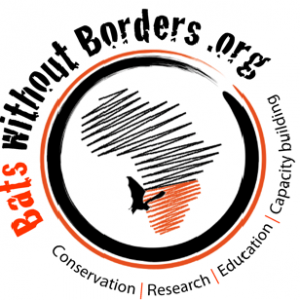
|
Bats Without Borders (BWB) [Network Poster] Lead representatives to GBatNet: Rachael Cooper-Bohannon BWB is dedicated to conserving bats, biodiversity and healthy ecosystems within southern Africa's changing landscape. The group aims to achieve this by supporting and conducting applied research that informs targeted conservation action, strengthening local capacity and promoting a positive attitude towards bats through public engagement. |
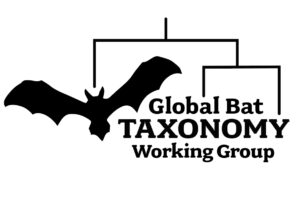
|
Global Bat Taxonomy Working Group (GBTWG) [Network Poster] Lead representatives to GBatNet: Nancy Simmons, Tigga Kingston, Susan Tsang, Paul Bates, Connor Burgin The GBTWG has operated as a commission of the IUCN Bat Specialist Group since 2017, with the aim of this group being to produce and maintain a vetted online database of bat species diversity (~1,400 species) with complete taxonomic and geographic range data. As Chair of the GBTWG, Dr. Simmons manages a team of 10 taxonomists and a GIS expert working on updating bat taxonomy, mapping capabilities, and other web enhancements. The open-access database is now up and available for use here. |
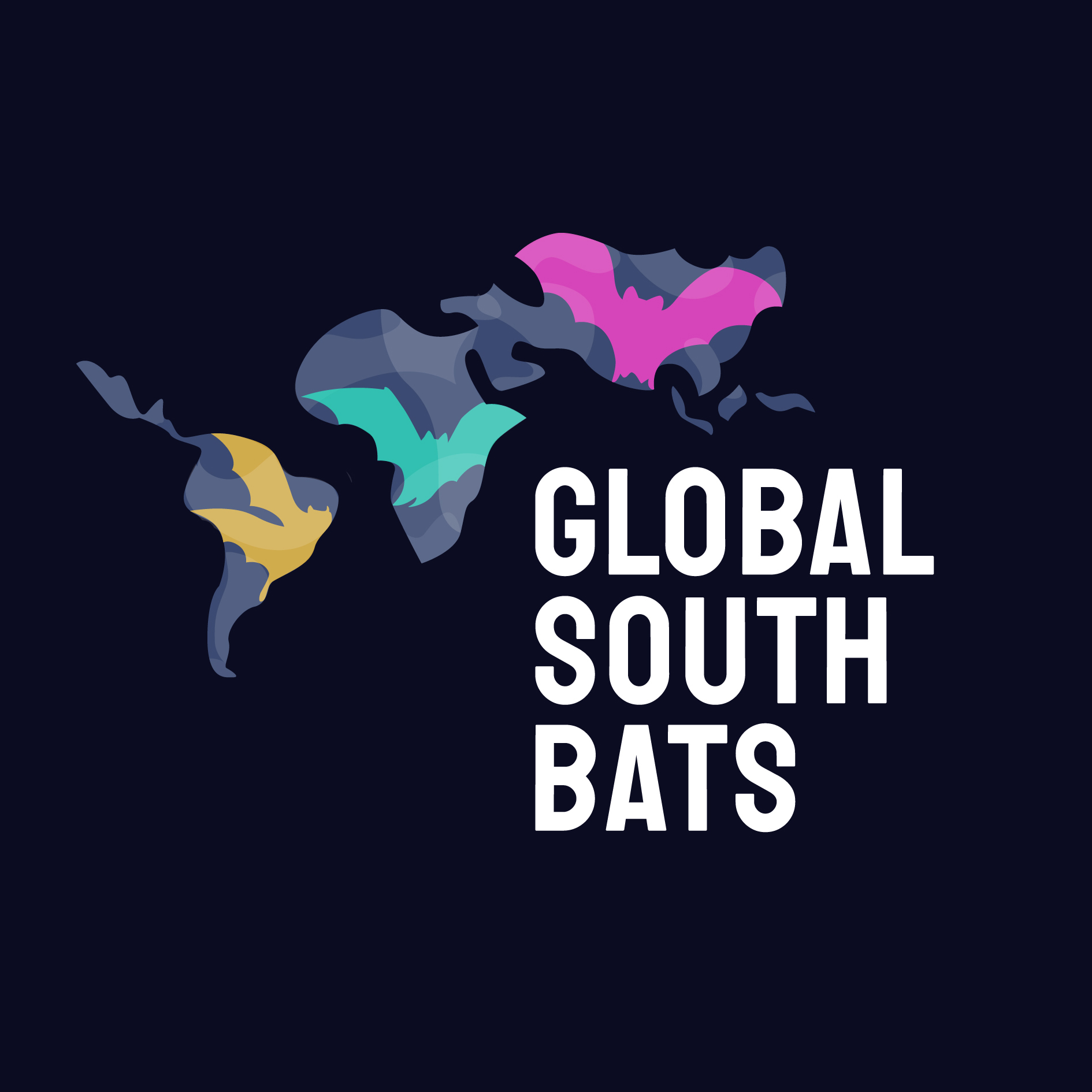
|
Global South Bats (GSB) [Network Poster] Lead representatives to GBatNet: Rodrigo A. Medellín, Luis Víquez-R, Angelica Menchaca The Global South encompasses the most biodiverse regions on the planet from which hundreds of papers are published every year. However, knowledge transfer and professional development in these regions lag behind in comparison to the Global North. Global South Bats (GSB) was born to respond to these challenges. We are a team working to strengthen the voice of those working for wildlife in the Global South. Living and working in hotspots of bat biodiversity, we face many of the same knowledge gaps, threats, and opportunities. Our goal is to connect and empower bat conservation allies in the Global South, where locally-led research for wildlife protection is most needed. We are thinking globally and implementing locally. |
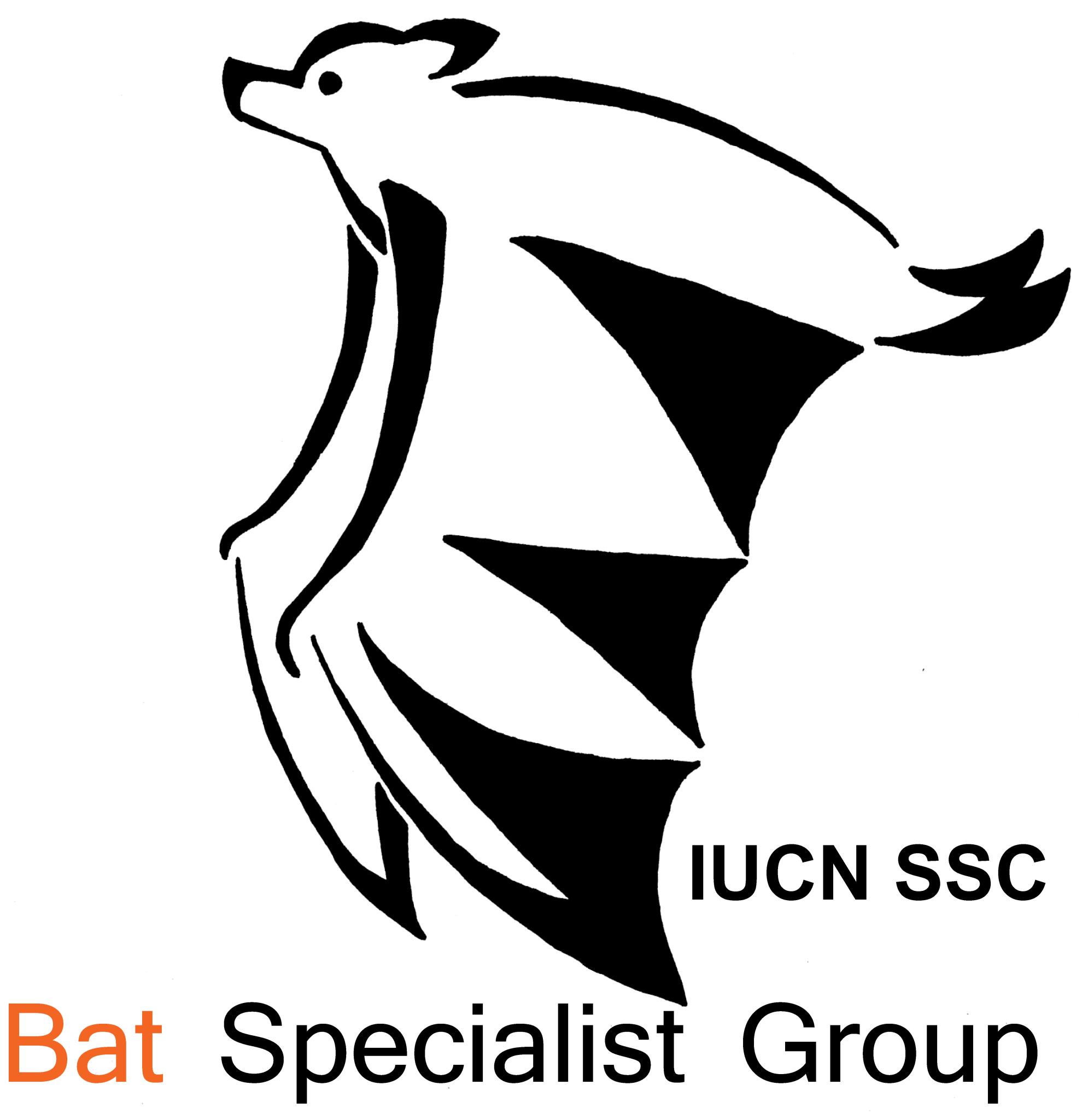
|
IUCN SSC Bat Specialist Group (IUCN BSG) [Network Poster] Lead representatives to GBatNet: Tigga Kingston, Rodrigo Medellin, Nancy Simmons, Susan Tsang, Luis Aguirre, Winifred Frick, Suren Gazaryan, Kevin Olival, Emma Teeling, Paul Webala The BSG is one of the oldest specialist groups formed within the Species Survival Commission (SSC) of the IUCN (International Union for the Conservation of Nature). Dr. Kingston was appointed co-Chair, with responsibility for the Old World (>800 species) in 2015. She collaborates with Dr. Medellin, co-Chair for the New World, to lead a global network of > 110 bat biologists and from over 50 countries. Typically, there are one or two BSG specialists per country. The BSG mission is (1) To contribute to the mission and goals of IUCN/SSC. (2) To ensure the maintenance or recovery of populations of threatened bat populations. (3) To ensure that other bat species remain at a favorable conservation status. The BSG is active in many of its own initiatives, as well as focusing on the assessment of bat species' status for the Red List assessments, compiling and distributing intelligence on issues of international importance, and supporting the work of its members. A central concern is to promote the dialogue among bat scientists and conservation practitioners throughout the world. The specialists have produced two global conservation action plans (Mickleburgh et al. 1992, Hutson et al. 2001). The Plans provided a global framework for bat protection and that stimulated the growing community of bat biologists and conservationists to a greater level of action.The BSG brings access to the expertise and experience of country representatives from all over the world to GBatNet, including countries that are not currently represented by regional networks. In addition, the BSG co-Chairs provide access to resources and training of IUCN for conservation assessments (Red List, Key Biodiversity Areas) and to expertise held by other disciplinary groups within the SSC (e.g. Biodiversity and Protected Areas, Human-Wildlife Conflict, Wildlife Health, Conservation Genetics, Conservation Planning) that can advance the GBatNet mission. |
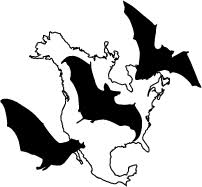
|
North American Bat Conservation Alliance (NABCA) [Network Poster] Lead representatives to GBatNet: Charles Francis, Rodrigo Medellin, Jeremy Coleman The North American Bat Conservation Alliance (NABCA) is an informal alliance among federal, state/provincial and local government agencies; regional bat working groups; non-government organizations; industry; individual scientists and biologists and concerned members of the public interested in bat conservation. The role of NABCA is to facilitate coordination and communication among parties interested in bat conservation in North America, to develop and maintain a North American Bat Conservation Strategy, and to develop and promote Action Plans to implement the priorities identified in the Strategy. NABCA brings experience of the challenges involved in coordinating transboundary research and conservation responsive to urgent issues. For example: (1) White Nose Syndrome spread to Canadian hibernacula within 3-4 years of first detection in the US, with similarly devastating consequences. (2) Many bat species in North America are migratory - breeding in the spring and summer in US and Canada and migrating to the southern US and Mexico. This provides interesting opportunities to explore the role of migration in bat diversification, but also presents conservation and disease management complexities. |
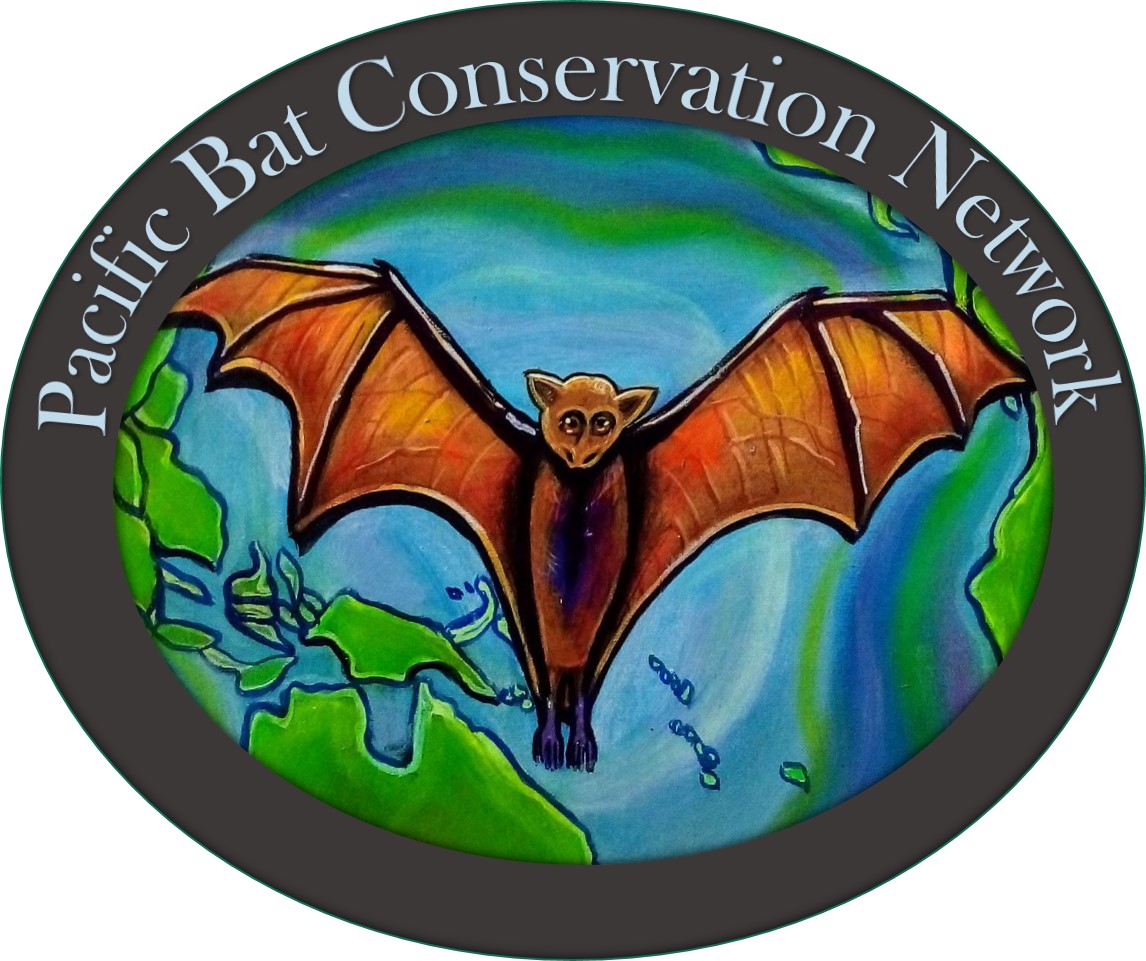
|
Pacific Bat Conservation Network (PacBat) [Network Poster] Lead representatives to GBatNet: Justin Welbergen, Malik Oedin PacBat is a consortium of researchers; community members; and representatives from non-government organizations, government bodies, and non-profit community organizations. The aim of PacBat is to engage and catalyze a diverse network of stakeholders throughout the Pacific and wider Oceanic region, to aid in the conservation and recovery of Pacific Island bat species. The Pacific Island region has 43 threatened bat species including 4 that are already thought to be extinct, with this region experiencing disproportionate mammal declines compared to other areas. PacBat was established in late 2020 and fills a geographical gap not yet covered by other bat networks, and works closely with the Australasian Bat Society. In August 2021, PacBat hosted the inaugural Pacific Island Bat Forum and aims to continue facilitating discussion and actions to promote the conservation of Pacific Island bats into the future. As part of GBatNet, PacBat will be able to collaborate on international bat issues, and learn from the long-standing networks that are part of this global union. |
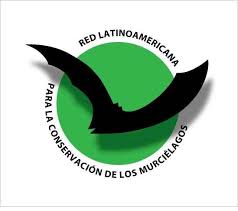
|
Red Latinoamericana para la Conservación de los Murciélagos (RELCOM) [Network Poster] Lead representatives to GBatNet: Luis Aguirre, Rodrigo Medellin, Monica Diaz, Santiago Burneo, Bernal Rodríguez-Herrera, Jafet M. Nassar RELCOM comprises country-based networks (Programs for Bat Conservation - PCM). RELCOM began with five countries and now has members from 23 programs and 25 countries in Latin America and the Caribbean. The Mission of RELCOM is to guarantee the persistence of healthy bat species and viable populations in Latin America and the Caribbean and that in all the countries their importance is acknowledged and recognized. Activities are organized around research, outreach, and conservation. Research - promote and stimulate the generation of scientific knowledge that contributes to the conservation of bats and their habitats. Education and public outreach - spread the knowledge about bats over the civil society and involve local people in their conservation. Conservation - promote the implementation of specific actions and policies aimed at preserving the species and bat populations in Latin America and the Caribbean.As the network has matured, it has overlaid the geographic network of countries with cross-country thematic networks. One of the most important themes and activities is the creation of a regional network of important bat conservation areas and sites (AICOMs and SICOMs as stands in Spanish, A&S). Core participants Aguirre and Nassar are currently co-coordinating the A&S committee and promoting the creation of over 200 A&S region-wide [with support from the Iberoamerican Development Program of Science and Technology (CYTED)]. This network of A&S is an important resource for exploring the research and conservation goals of GBatNet. |
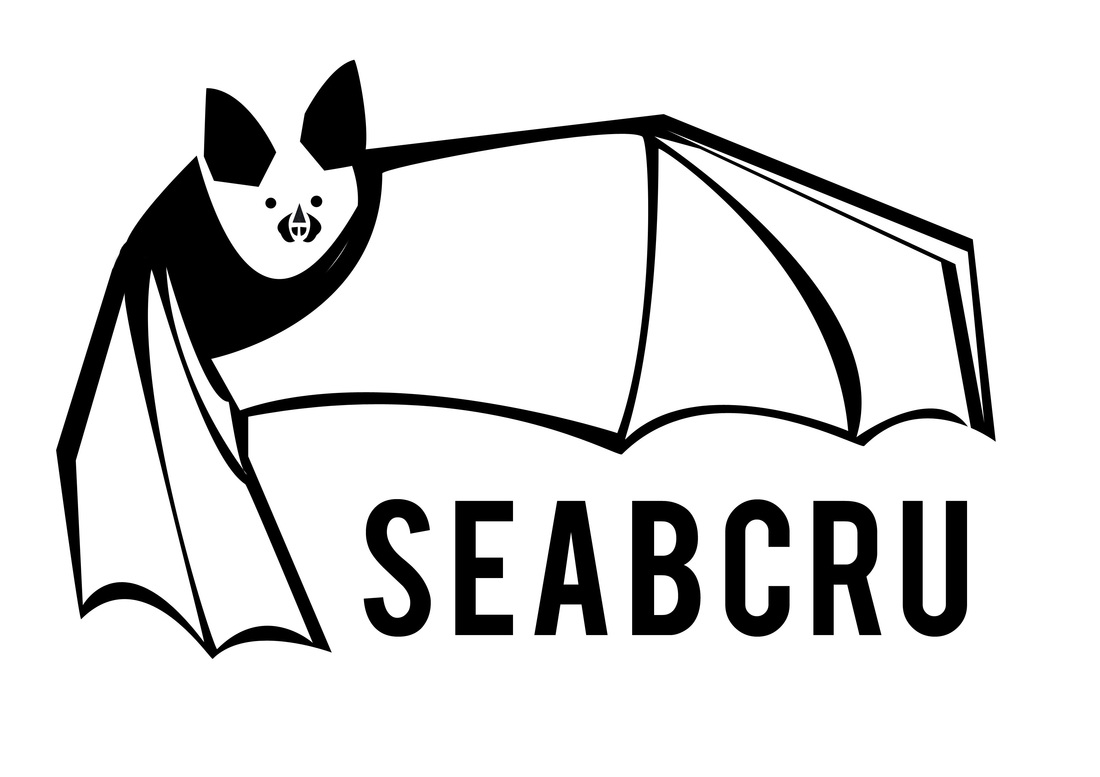
|
Southeast Asian Bat Conservation Research Union (SEABCRU) [Network Poster] Lead representatives to GBatNet: Tigga Kingston, Susan Tsang, Juliana Senawi, Pipat Soisook, Sigit Wiantoro Dr. Kingston founded the SEABCRU in 2007, as a regional network of bat researchers from Southeast Asia countries (Indonesia, Malaysia, the Philippines, Vietnam, Thailand, Laos, Cambodia, Singapore, Myanmar, Brunei, E. Timor), along with foreign researchers from the US, UK, Australia, India, Bangladesh, and Taiwan. The SEABCRU provides an organizational framework for international and SE Asian bat researchers to network, integrate and transfer knowledge and to coordinate research activities than can provide scientific support for the conservation of the region's diverse but threatened bat fauna. Capacity building and outreach are also essential components of the SEABCRU mission. In 2011, the SEABCRU received funding from NSF's RCN program to affect a regional assessment of the distribution, abundance and status of Southeast Asian bats and to inspire regional communication and collaborative initiatives. SEABCRU has built capacity for bat research and promoted bat conservation efforts in the region through a series of needs-specific workshops in gap countries and stimulated collaborations with triennial conferences. The group has generated standardized protocols and trained researchers in them, leading to the creation of unique datasets that have led to new research collaborations in bat taxonomy, ecology, and emerging infectious diseases. The SEABCRU database for bat locality data (DarwinCore Format), which currently holds ~40K records including cleaned GBIF records, electronic records from museums, records digitized from card-records of museums, data from published literature and field records of SEABCRU members. Because the data standard is DarwinCore format, the database can readily accept records from other networks in a globalization effort. Alternatively, networks can develop their own instance using the application code once it is archived, with guidance from SEABCRU's database developer. Because of the common format (DwC), either approach allows for data integration and analyses for GBatNet synthesis projects. SEABCRU has also acted as a conduit for regional researchers to international networks that are also members of GBatNet, such as BOHRN, BCI, and the IUCN BSG, and many of its members utilize the network's active social media presence to seek out new information on protocols or opportunities. |
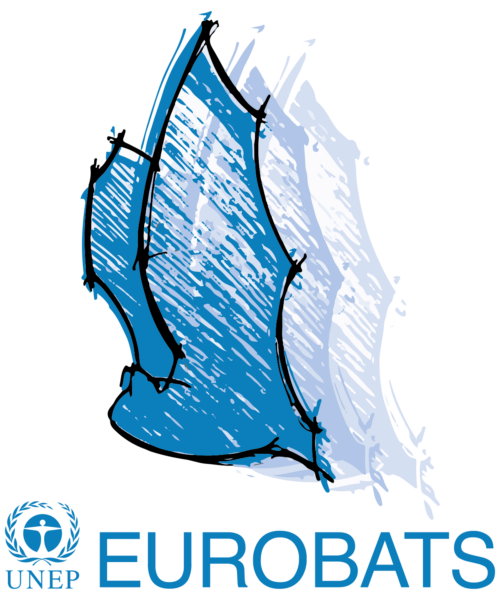
|
United Nations Environmental Programme Agreement on the Conservation of Populations of European Bats (UNEP/EUROBATS) [Network Poster] Lead representatives to GBatNet: Suren Gazaryan EUROBATS is an agreement to which range states (countries) accede and thereby becoming parties. The mission is to (1) Exchange information and coordinate international research and monitoring initiatives; (2) Arrange the Meetings of the Parties and the Advisory and Standing Committee Meetings; (3) Stimulate proposals for improving the effectiveness of the Agreement and attract more countries to participate in and join the Agreement; (4) Stimulate public awareness of the threats to European bat species and what can be done at all levels to prevent their numbers dwindling further.EUROBATS convenes intersessional working groups that produce authoritative reports that help to inform conservation. Currently, there are 17 active groups working on conservation issues that range from the conservation of key underground sites to quality assessments and skills of experts. GBatNets can greatly benefit from knowledge and expertise accrued over 25 years of EUROBATS and gain insights into organizational structure and practice of a large network. |
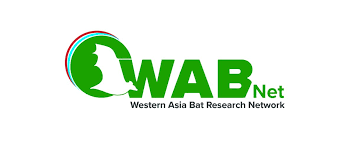
|
Western Asia Bat Research Network (WABNet) [Network Poster] Lead representatives to GBatNet: Kevin Olival, Kendra Phelps EcoHealth Alliance (EHA), a global non-profit organization dedicated to protecting wildlife and public health, formed the Western Asia Bat Research Network in collaboration with key regional stakeholders in Western Asia in 2018. The WAB-Net aims to promote meaningful collaborative research to improve scientific capacity for bat One Health research and zoonotic disease mitigation in the region. Network countries actively participating in the network include Armenia, Azerbaijan, Georgia, Israel, Jordan, Lebanon, Oman, Pakistan, Saudi Arabia, Turkey, and UAE. Research combines surveillance of viruses-primarily coronaviruses-with clear ecological hypothesis and field data collection. A fundamental tenet of WAB-Net is that threats to bat populations (habitat modification, hunting etc.) are also drivers of disease emergence and spillover. To learn more, visit the WAB-Net website and read this paper. |
